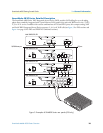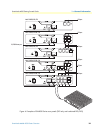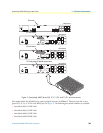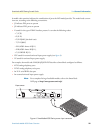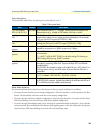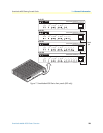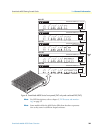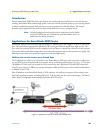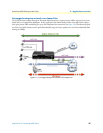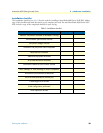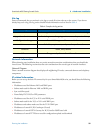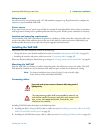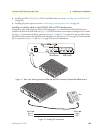
Introduction 26
SmartNode 4830 Getting Started Guide 2 • Applications overview
Introduction
Patton’s SmartNode VoIP IADs deliver the features you need for advanced multiservice voice and data net-
working. SmartNode IADs combine high-quality voice-over-IP with powerful quality of service routing features
to deliver seamlessly-integrated VoIP and data access over synchronous serial leased lines. This chapter
describes typical applications for which the SmartNode 4830 Series series is uniquely suited.
Note Detailed configuration information for the applications can be found
on the CD-ROM that was included with your SmartNode device or
online from the Patton webserver.
Applications for SmartNode 4830 Series
SmartNode 4830 Series devices have dual 10/100Base-T Ethernet ports and a single V.35 or X.21 sync-serial
port. The two Ethernet ports provide full featured IP routing plus Ethernet and IP layer QoS services. The
sync-serial port provides WAN access for integrated voice and data via a leased-line connection to the network.
Voice prioritization and traffic management avoid network congestion and provide optimal voice quality. The
following sections show two typical converged voice-and-data applications.
Multiservice carrier access over leased lines
The SN4830 Series enables service providers to use Frame-Relay or PPP sync-serial access lines to offer Inter-
net and VPN services integrated with voice services for up to 8 analog telephone lines (see figure 9). The dual
10/100Base-TX LAN ports can be used for LAN connectivity and a dedicated VPN and DMZ connection.
The FXS ports connect to PBXs, key-systems or handsets while the FXO ports can be used for local breakout
or fallback to the PSTN.
Like all members of the SmartNode family of VoIP solutions, the 4830 series supports all the industry-stan-
dard VoIP signaling protocols, including SIP, H.323, T.38 fax-relay, plus fax- and modem-bypass. The Smart-
Node 4830 is interoperable with leading softswitches and VoIP servers.
Figure 9. Multiservice carrier access over leased lines



